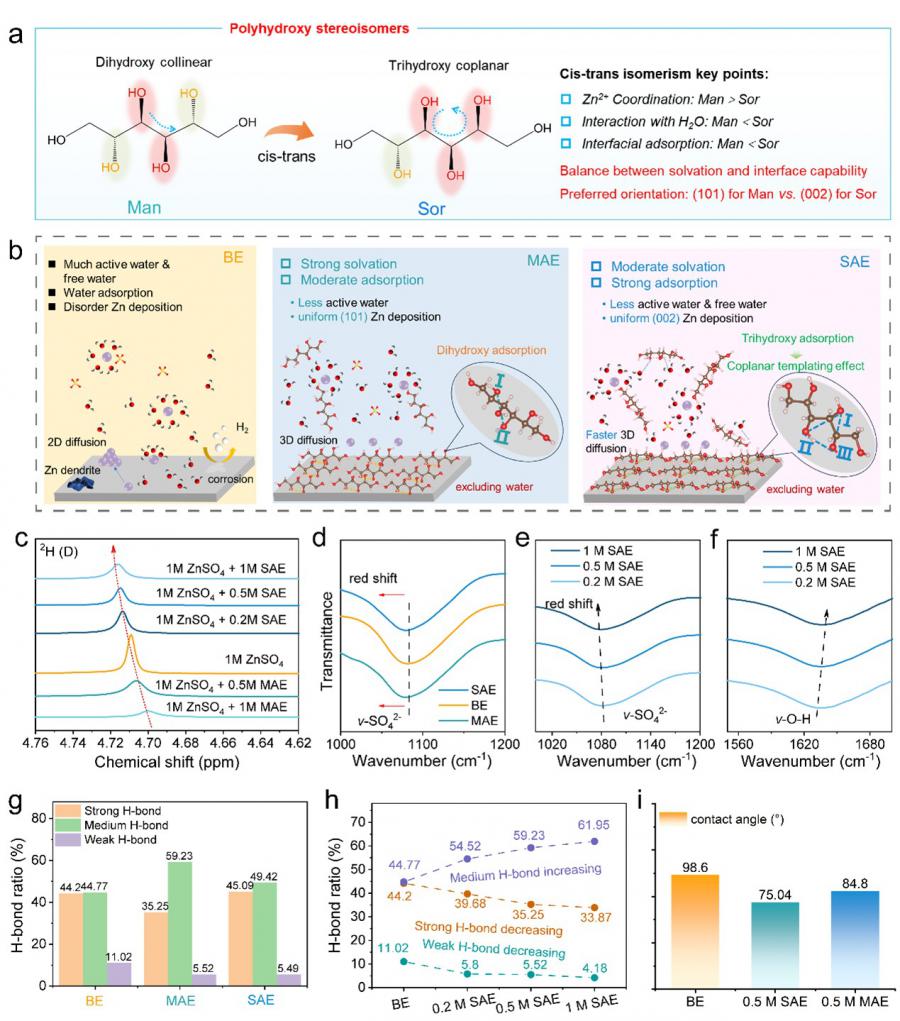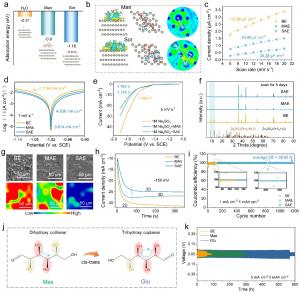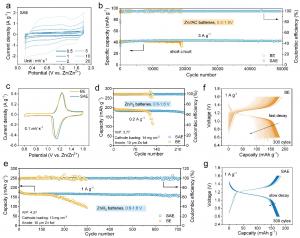
Stereoisomeric Engineering for Critical Balance of Solvation and Adsorption Capability
GA, UNITED STATES, April 15, 2025 /EINPresswire.com/ -- This study introduces the stereoisomerism to inform the balanced selection of electrolyte additives to achieve the optimal deposition behaviors and electrochemical performance. An appropriate level of solvation ability and adsorption ability can facilitate faster deposition kinetics and encourage the preferential orientation growth of (002) planes. With sorbitol, the symmetrical battery can stably cycle for over 3470 h at 2 mA cm-2 and 1 mAh cm-2, and full battery also exhibits excellent electrochemical performance.
Aqueous zinc-ion batteries (AZIBs) demonstrate remarkable advantages in high safety, abundant reserves, and cost-effectiveness. Nevertheless, the zinc metal anode fails to deliver optimal performance during repeated plating/stripping processes, where water molecules serve as critical instigators of corrosion and heterogeneous deposition.
To strategically regulate aqueous species in both bulk electrolyte and interfacial regions, electrolyte additives have been extensively employed to modulate electrolyte properties. These additives primarily function through two mechanisms: 1) interfacial adsorption to eliminate free water molecules, or 2) solvation structure modification through hydrogen-bond network disruption to immobilize reactive water in bulk electrolyte.
Consequently, the solvation-modulating capability and adsorption potential of additives constitute crucial metrics for evaluating their effectiveness. Notably, organic additives containing multiple functional groups frequently exhibit structural isomerism – compounds sharing identical molecular formulas but distinct configurations. Such structural divergences often translate to substantially different electrochemical behaviors, highlighting the importance of molecular engineering in additive design.
In a new studypublished in the KeAi journal Advanced Powder Materials, sorbitol (Sor) and mannitol (Man), a pair of polyhydroxy stereoisomerisms, were chosen as electrolyte additives for designing two electrolyte systems to identify the equilibrium between solvation and adsorption.
“Both Sor and Man have six hydroxyl groups, with only the spatial position of the hydroxyl group on the second carbon being different,” explains the study’s first author Wen Liu. “It’s the structure-activity relationship between these two compounds that accounts for the observed differences in battery performance.”
Surprisingly, the trihydroxy group on the same side of Sor exhibits a stronger adsorption capacity than the dihydroxyl groups on the same side of Man, and it generates a coplanar templating effect.
“This effect promotes the uniform distribution of charges, increases nucleation sites, and induces (002) preferred growth. Compared to base ZnSO4 electrolyte, Sor and Man molecules present stronger binding energy with Zn2+ ions and they can participate in solvation structure of Zn2+ ions,” says Liu.
Due to the weaker interaction force between Sor molecular and Zn2+ ions compared to Man, it ensures a faster de-solvation process and accelerates the deposition kinetics. These unique advantages make Zn anode in Sor added electrolyte demonstrate more exceptional performance for more than 3470 h at 2 mA cm-2 and 1 mAh cm-2.
“Moreover, Zn//AC full cell with Sor additive can steadily operate for 50000 cycles at 3 A g-1. In order to test the practical application, Zn//I2 full cell under low N/P ratio of 4.37 can also steadily run for 710 cycles at 1 A g-1, exhibiting four-times lifespan than bare ZnSO4 electrolyte,” adds Liu.
References
DOI
10.1016/j.apmate.2025.100276
Original Source URL
https://doi.org/10.1016/j.apmate.2025.100276
Funding information
This research was financially supported by Natural Science Foundation of Hunan Province (No. 2023JJ20064) and the National Natural Science Foundation of China (No. 52377222).
Lucy Wang
BioDesign Research
email us here
Distribution channels: Science, Technology
Legal Disclaimer:
EIN Presswire provides this news content "as is" without warranty of any kind. We do not accept any responsibility or liability for the accuracy, content, images, videos, licenses, completeness, legality, or reliability of the information contained in this article. If you have any complaints or copyright issues related to this article, kindly contact the author above.
Submit your press release




